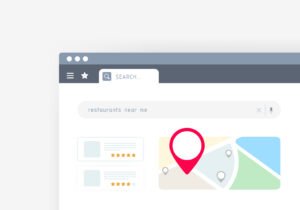What Every Small Business Owner Should Know About Google’s Algorithm Changes
Google’s search algorithm changes can sometimes feel like navigating a maze. Small business owners must stay informed and adapt to ensure their websites remain visible and competitive. This guide simplifies recent updates and offers actionable SEO strategies to help small businesses thrive online.
Understanding Google’s Algorithm Updates
Google continually refines its algorithm to provide better search results for users. Here’s a breakdown of recent key changes:
- Helpful Content Update:
- Focuses on user-centric content that genuinely answers search queries.
- Penalizes sites with thin, keyword-stuffed, or clickbait content.
- Core Web Vitals:
- Measures user experience through metrics like page loading speed, interactivity, and visual stability.
- Sites with optimized user experience receive higher rankings.
- E-A-T (Expertise, Authority, Trustworthiness):
- Prioritizes credible, high-quality content, especially for topics like health and finance.
- Demonstrating expertise through authoritative backlinks and content is critical.
- SpamBrain:
- Google’s AI model identifies spammy behavior, including low-quality backlinks and manipulative tactics.
- Ethical practices and natural link-building are more important than ever.
Why Small Businesses Should Care
For small businesses, visibility in local and organic search results can be a game-changer. Algorithm updates ensure that users get the best results, meaning businesses must continuously refine their strategies to remain relevant and competitive.
Adapting Your SEO Strategy: Actionable Steps
Here’s how small businesses can align with Google’s evolving standards:
1. Focus on High-Quality Content
- What to do: Create content that answers user queries comprehensively.
- How to implement: Use tools like Google’s People Also Ask feature or Buzzsumo to discover trending topics in your niche.
2. Improve User Experience
- What to do: Ensure your site loads quickly and is mobile-friendly.
- How to implement: Use tools like Google PageSpeed Insights to analyze and enhance your site’s performance.
3. Leverage Local SEO
- What to do: Optimize your Google Business Profile and gather positive reviews.
- How to implement: Include your name, address, and phone number (NAP) consistently across directories.
4. Adopt E-A-T Principles
- What to do: Showcase your expertise and trustworthiness.
- How to implement:
- Publish well-researched blogs with references.
- Obtain backlinks from reputable sites.
5. Stay Ethical with Backlinking
- What to do: Avoid black-hat techniques like buying links.
- How to implement: Reach out to related, non-competitive sites in “shoulder niches” for collaborations.
6. Utilize AI for Optimization
- What to do: Use tools like MarketMuse to optimize content comprehensively.
- How to implement: Analyze your competitors and identify topic gaps.
Visual Aid: Algorithm Changes and Adaptation Flowchart (click to download .PDF file)
- Helpful Content Update → Focus on User Needs → Enhanced On-Page Engagement
- Core Web Vitals → Optimize Speed & Mobile Usability → Better User Experience
- E-A-T Guidelines → Build Authority & Trust → Improved Rankings
Staying Ahead of Future Changes
- Monitor Updates: Regularly check Google Search Central or trusted SEO blogs.
- Experiment and Analyze: Continuously test new strategies and track results using tools like Google Analytics.
Conclusion
Google’s algorithm changes aren’t roadblocks—they’re opportunities for growth. By embracing these updates and implementing adaptive strategies, small businesses can achieve sustainable success in the digital realm. Keep learning, experimenting, and evolving to stay ahead in the search game.











